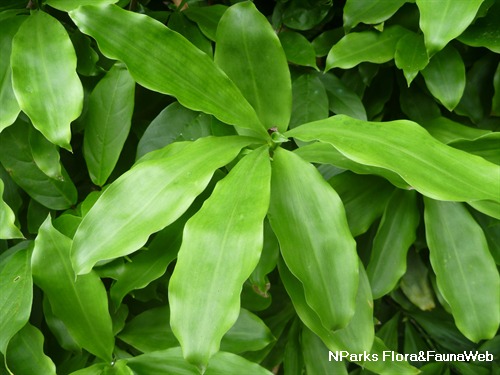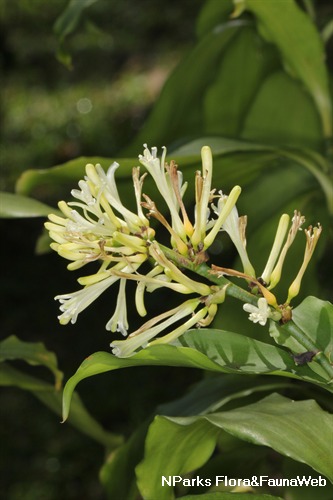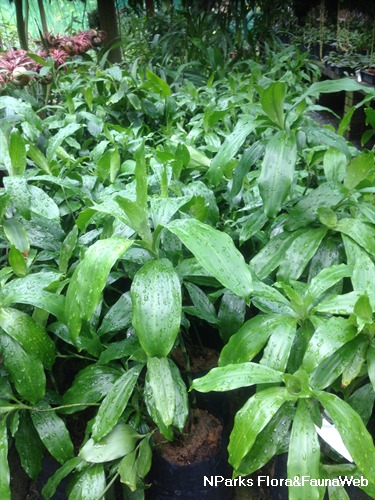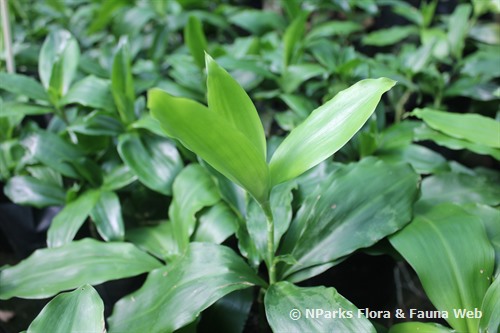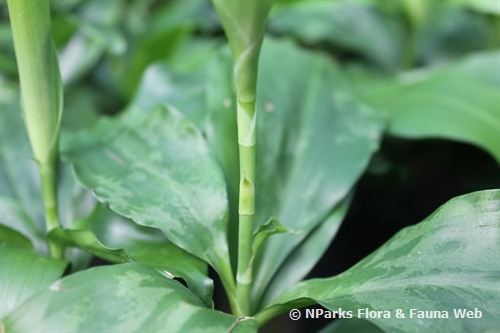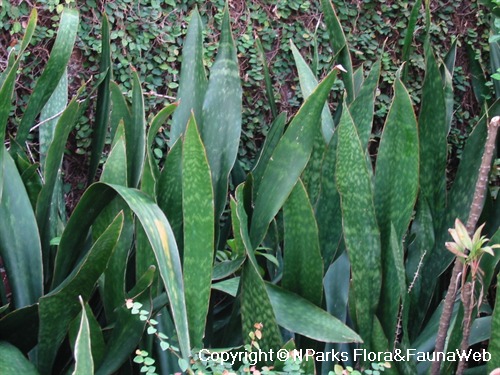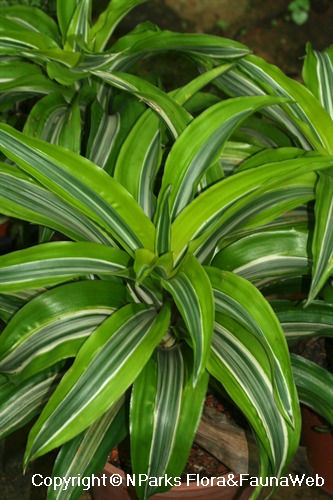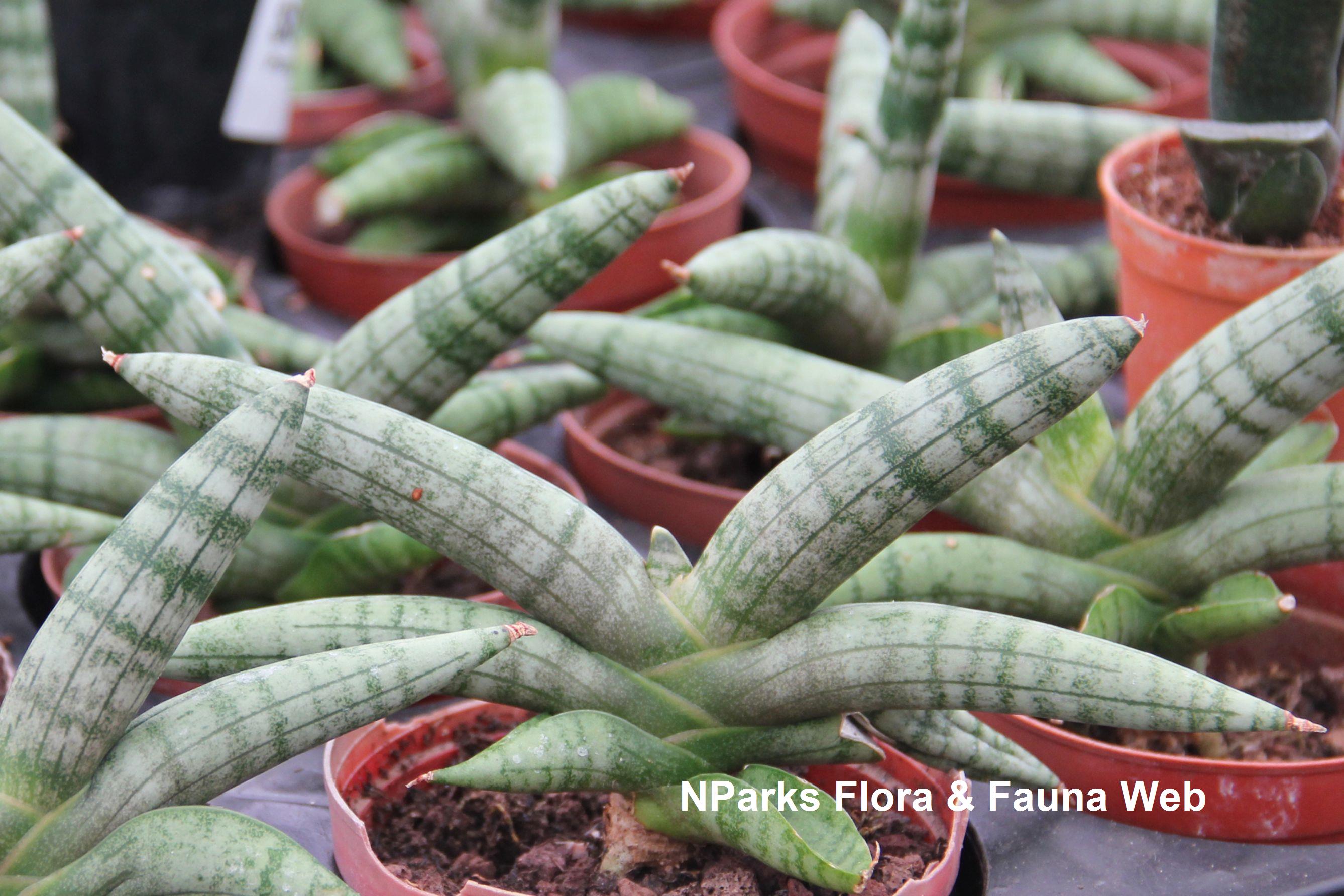
Name
Classifications and Characteristics
| Plant Division | Angiosperms (Flowering Seed Plants) (Monocotyledon) |
|---|---|
| Plant Growth Form | Shrub |
| Lifespan (in Singapore) | Perennial |
| Mode of Nutrition | Autotrophic |
Biogeography
| Native Distribution | Thailand, Peninsular Malaysia, and Singapore |
|---|---|
| Native Habitat | Terrestrial |
| Preferred Climate Zone | Tropical |
| Local Conservation Status | Native to Singapore (Vulnerable (VU)) |
Description and Ethnobotany
| Growth Form | It is a short, little branched shrub, 0.6–1 m tall. |
|---|---|
| Foliage | Its spirally arranged, stalked, leaves have leathery leaf blades that are usually oval-lance-shaped, ending abruptly in a pointed tip, with a narrowed base, green above, lighter green below, and 15 by 8 cm. |
| Flowers | Its small, white flowers are 2.5 cm long, and occur in loose clusters of 5 on a little to unbranched inflorescence. |
| Fruit | Its fruits are round to 3-lobed, orange-red, and about 1–1.5 cm in diameter. |
| Habitat | It grows in lowland forests, often in wet areas. |
| Cultivation | It can be propagated by seed and stem cuttings. |
| Etymology | Greek dracaena, a dragon, referring to the bright red dried red resin, called dragon’s blood, obtained from various species including those of Dracaena; Latin umbratica, belonging to the shade or shade-loving, referring to the shade preference of this species |
Landscaping Features
| Desirable Plant Features | Ornamental Flowers, Ornamental Foliage |
|---|---|
| Landscape Uses | Parks & Gardens |
Fauna, Pollination and Dispersal
| Fauna Pollination Dispersal Associated Fauna | Bird-Attracting |
|---|---|
| Pollination Method(s) | Biotic (Fauna) |
| Seed or Spore Dispersal | Biotic (Fauna) |
Plant Care and Propagation
| Light Preference | Semi-Shade |
|---|---|
| Water Preference | Moderate Water |
| Rootzone Tolerance | Moist Soils, Well-Drained Soils, Fertile Loamy Soils |
Image Repository
Others
| Master ID | 32344 |
|---|---|
| Species ID | 6754 |
| Flora Disclaimer | The information in this website has been compiled from reliable sources, such as reference works on medicinal plants. It is not a substitute for medical advice or treatment and NParks does not purport to provide any medical advice. Readers should always consult his/her physician before using or consuming a plant for medicinal purposes. |

